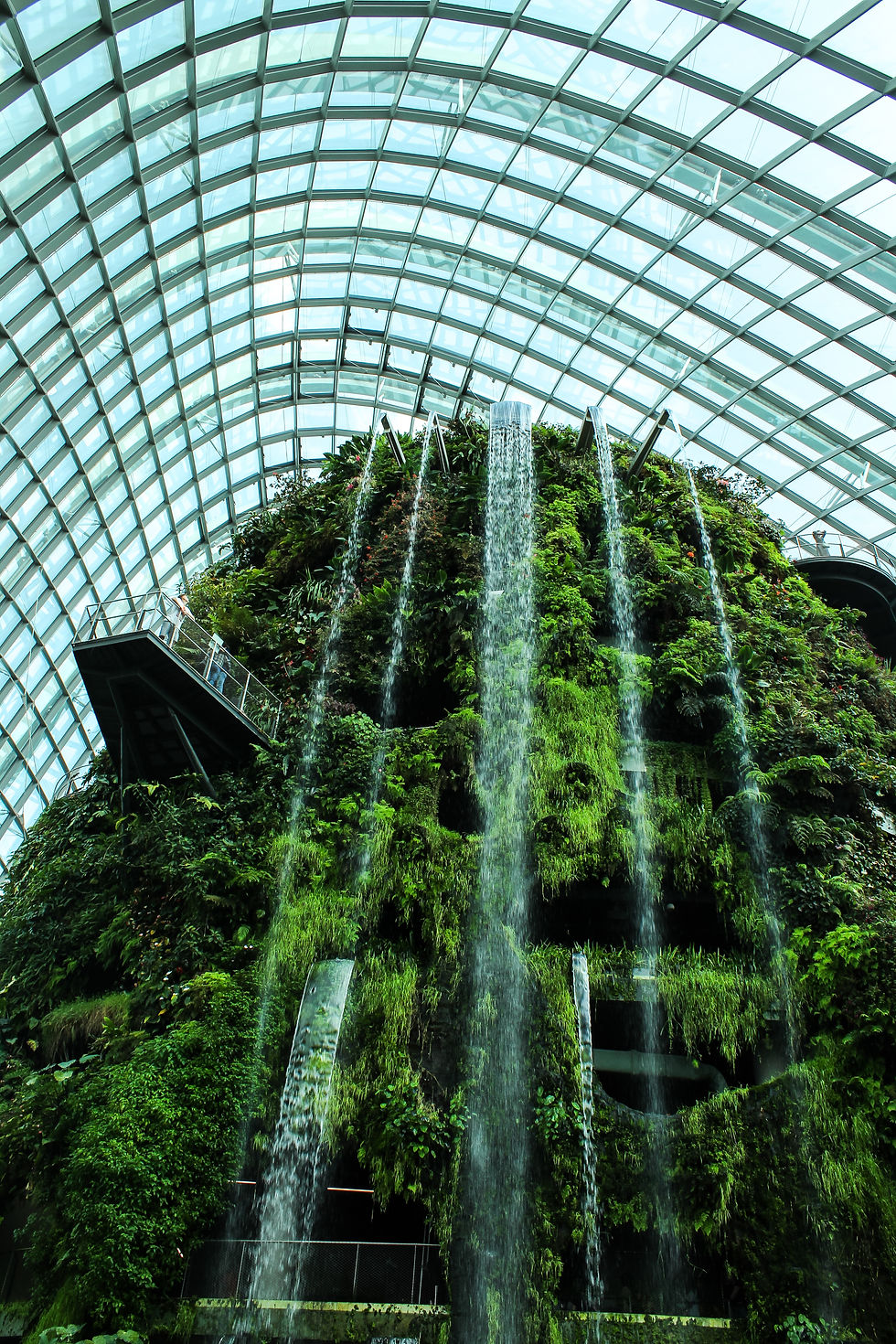The combination of smart technologies and architecture is giving rise to a whole new breed of smart eco-buildings.
Did you know that buildings are responsible for 44% of all carbon emissions? Today, we have the technology to make both residential and commercial buildings carbon neutral, and this possibility is revolutionising the way developers build and the way cities operate. We explored some of the smartest buildings in Europe, and saw firsthand how the only way forward is through the cooperation of business and green tech.
MEDIA TIC // BARCELONA, SPAIN
Although it may look like it's wrapped in bubble wrap, the technology surrounding this building is designed to keep the interior cool, dramatically reducing the need for air conditioning. Cooling buildings with air conditioning in hot countries like Spain can account for 40% of the building's energy consumption. The addition of a roof garden to promote oxygen creation and carbon absorption, as well as rooftop solar panels helps the building keep cool too and generate electricity.
How does the technology work?
Sensors all over the building detect when the sun is shining on the façade, causing nitrogen to be pumped into the ETFE cushions which then expand. ETFE is a durable, 100% recyclable film membrane that is only 1% of the weight of glass (and therefore easily transportable and reduces the need for large, heavy supporting structures too), and can be flexible to serve numerous purposes. It is a polymer that has also been used on projects like The Eden Project in Cornwall!
These cushions create a barrier between the building, and the sun in two ways. Firstly, on the southeast side of the building, the cushions create a pattern that allows for shade to be projected inside. Secondly, on the southwest side of the building, elongated cushions fill with cool nitrogen, and act as cloud-like filters against the sun. This technology stops approximately 114 tonnes of CO2 from entering the atmosphere every year, which is the equivalent to planting 5000 trees!
CAPITA GREEN // SINGAPORE
The Capita Green building is a high-tech residential and commercial building built around a simple concept that reaps major benefits: using nature as design inspiration is one of the best ways to combat climate change.
The top of the building displays a large, red, flower-like sculpture, whose petals are designed to capture wind, and guide it down into the building's cooling void--or, hollow core--where it is then pumped throughout the building's 40 floors for air conditioning. At 242 meters high, the air conducted from the top of the building is cooler and fresher than the air down below, due to the Sky Forest, or roof garden, planted surrounding the air-conducting flower.
Fifty-five percent of the building is covered in greenery, too. This not only has a positive effect on the residents or employees within, but it also reduces the effect of the building's solar heat gain--or the amount of heat that the building absorbs from the sun.
BLOOMBERG HQ // LONDON, UK
At its opening in 2017, the mayor of London, Sadiq Kahn, is quoted saying, "[The building] is also a shining example of what can be achieved by combining fantastic British architecture and the latest green technology to reduce our impact on the environment.
From its inception, Bloomberg's vision for the building--acting as its European headquarters--was to have as minimal of an impact on the environment as possible. It's earned its sustainability credentials predominantly due to its alternative solutions for ventilation, lighting, water consumption, and power.
GARDENS BY THE BAY, SINGAPORE
The bustling city-state of Singapore is filled with some of the most architecturally stunning and daring builds in the East. One such bio-engineering feat is the Cloud Forest, located within the Gardens by the Bay at the south side of the city. The public park boasts three kilometres of waterfront promenade, two conservatories, also known as "domes"--which are two of the largest climate-controlled glasshouses in the world--that showcase tropical and Mediterranean plant species respectively, and man-made "Supertrees" that collect renewable energy through photovoltaic technology on top, encourage biodiversity, and offer an interesting, futuristic learning space for locals and tourists alike.
We had the opportunity to go inside the Tropical Dome, also known as The Cloud Forest, in which visitors are immediately connected with nature.
Dotted with educational plaques communicating the effects of climate change, visitors to The Cloud Forest are taken on a journey through time, faced with the realities of mankind's impact on the earth, and the solutions aimed at helping change the future of our planet.
Visitors can also learn from the design of the dome itself. The specially designed glass encompassing the domes allows for optimal light to be let in for the plants, while also preventing a substantial amount of heat from entering, keeping the internal space at a desired cool temperature for the plants.
For more information on green projects and innovations revolutionising the field of sustainability, and to learn more about how you can get involved, visit goinggreenmedia.com.










Comments